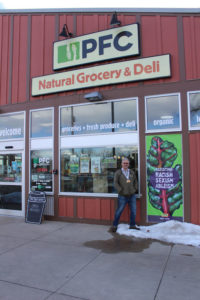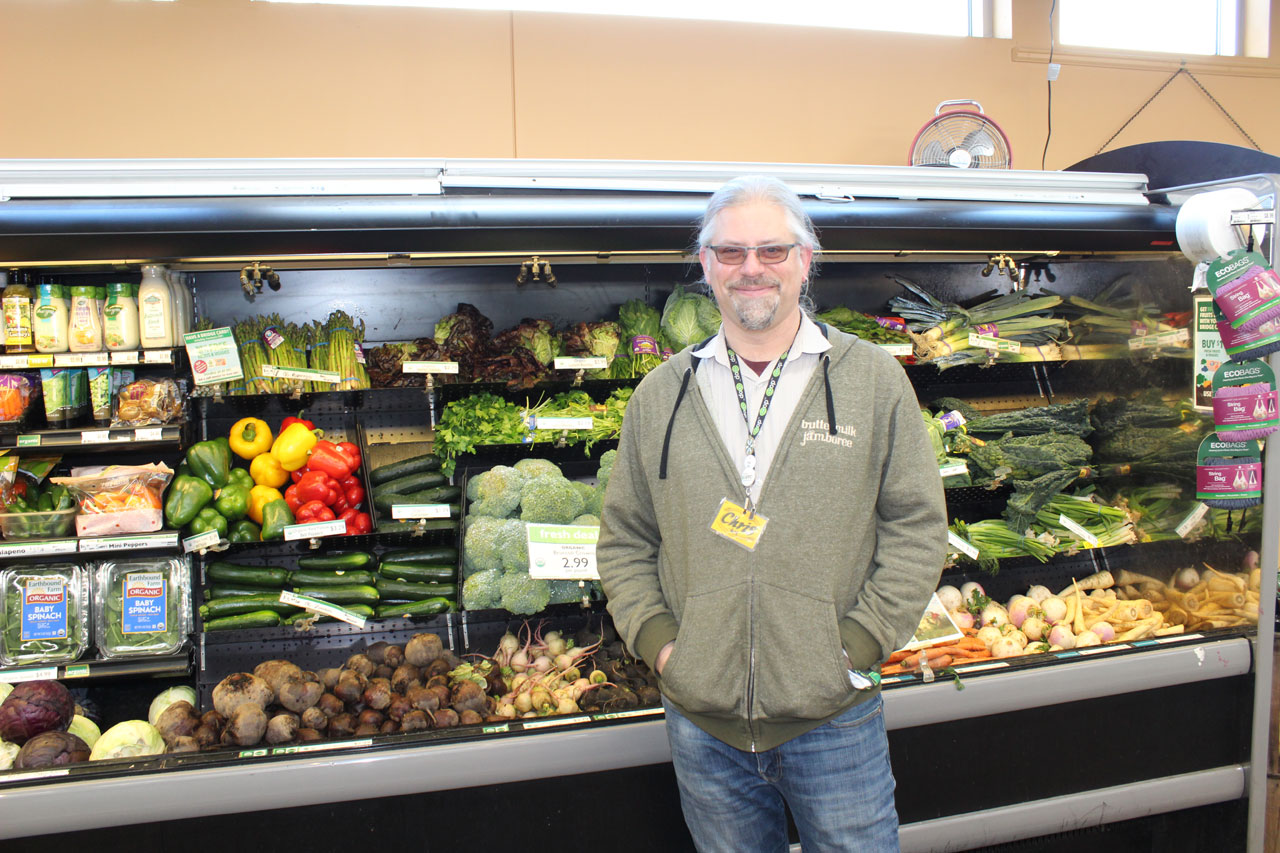Building capacity for change at Kalamazoo People’s Food Co-op
An iconic mural in downtown Kalamazoo paints the picture of community: food, farming, music, intergenerational work and play. The artist was commissioned to create a scene that would proudly display the vision and values of the People’s Food Co-op (PFC), housed behind that brick and mortar canvas on Burdick Street for 37 years. More than a decade later, with a new facade and a deeper purpose, the co-op still wears its heart on its sleeve.
Cornucopia’s Rachel Zegerius recently caught up with longtime, and very busy, PFC General Manager Chris Dilley to learn more about this valuable treasure in her hometown.
 What has changed most in your years as general manager of PFC?
What has changed most in your years as general manager of PFC?
The focus on local food in the community, and the broader focus on local and organic food, has ballooned. Programs and infrastructure have developed over time: Fair Food Matters (an experiential education garden program for youth) and the Can-Do Kitchen (an incubator providing commercial kitchen space), along with the strong backbone that is the Kalamazoo Farmers Market, have entrenched local food as part of the local culture here.
How has this local food movement impacted the co-op?
We expanded from a 700-square-foot retail space on Burdick Street (the mural is still there!) to our now 6,000-square-foot building, with dreams of expanding more.
Are co-op shoppers still interested in the source of their food? Very! Our local purchasing increased from 24% in 2019 to nearly 30% in 2020. That represents an additional $120,000 spent here in the community in support of local producers just last year.
What sets the co-op apart from other natural grocers? Owned by its members and governed by a board of directors, PFC is values-driven. All of the decisions we make—from the products on the shelves to how we engage in the community—are guided by our goals to nourish equity and resilience. One example of this: In 2010, when we were considering the location of our new store, we decided to build on Harrison Street, in an economically and racially diverse neighborhood. With so much to learn about how to address inequity, choosing this location was our first step to embrace diversity as a strength, allegorical to biodiversity, to help create stronger social systems.
Please tell me more about the work you have done to address inequity and dismantle systemic racism.
Ten years ago, we began training an Anti-racism Transformation Team. It’s a leadership body with the role of creating an anti-oppressive culture within the co-op. Team members define the pinch points that are impeding true equity from happening and help us do the work to address those. It’s structural and systemic work, establishing policy and procedures, but also building the capacity of individuals and the group to understand how we’ve all internalized oppression.
What inspires you the most about the future of the co-op? I’m most excited about working collectively as a community to address the issues of our time— including the climate crisis. Co-ops have systems in place to share experience and knowledge. For example, National Co-op Grocers’ Co+efficient Program offers a common framework for co-ops to measure their sustainability baseline, analyze strengths and opportunities, and improve sustainability results. I want to see this commitment to local systems, sustainability, and “cooperatism” continue to grow, building the capacity of our community to work together and align across different mindsets and values systems. I think that’s the potential of cooperatives.


